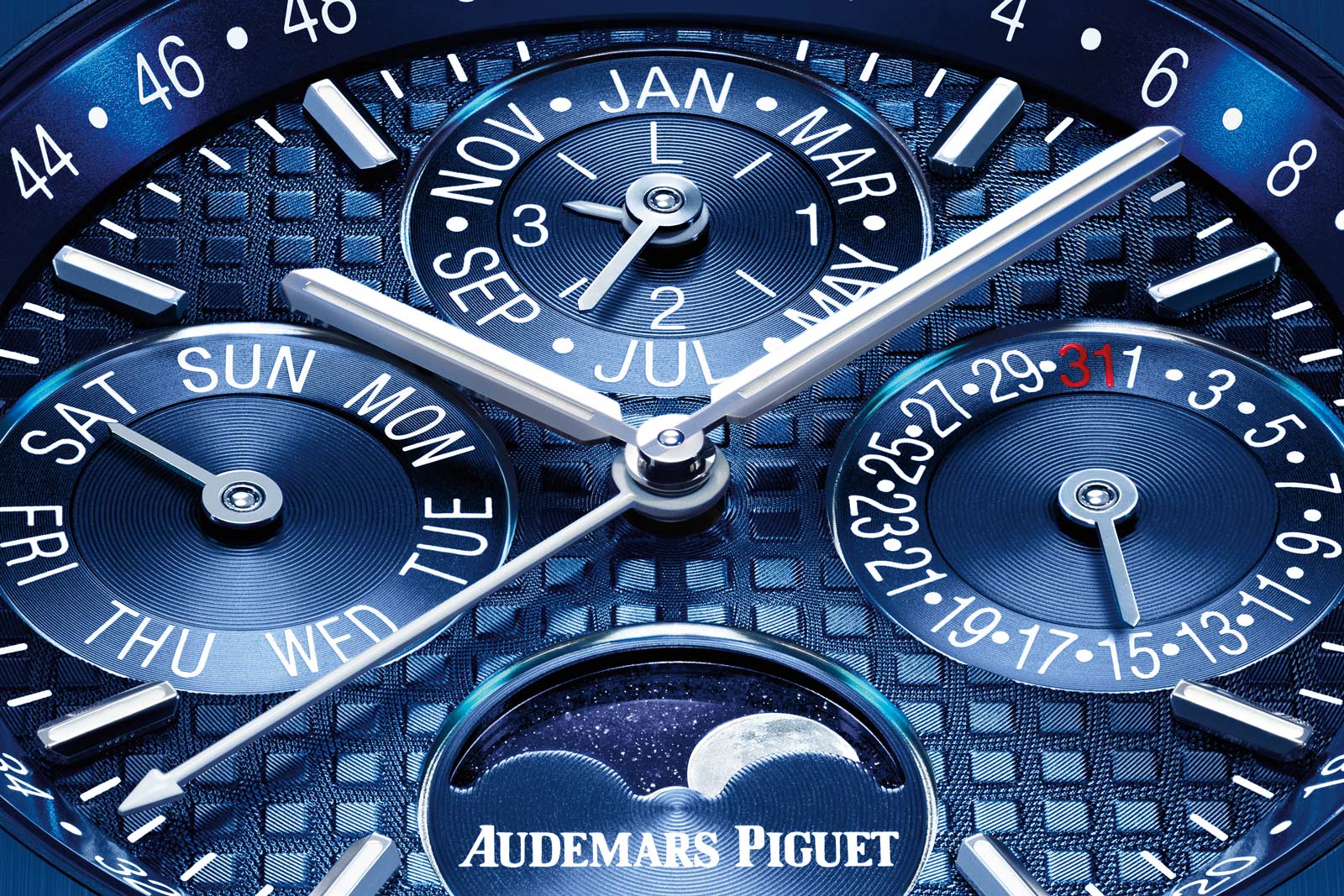Audemars Piguet Debuts the Royal Oak Perpetual Calendar Blue Ceramic
The first all-blue AP.
After rolling out the Royal Oak Perpetual Calendar in black and then white ceramic – making them the first all-ceramic Royal Oaks – Audemars Piguet put new colours on hiatus, until now. The Le Brassus watchmaker has just unveiled the Royal Oak Perpetual Calendar ref. 26579CS in blue ceramic, making it the first Royal Oak entirely in coloured ceramic (aside from black or white).
Initial thoughts
Though ceramic has long been a favoured case material at Audemars Piguet (AP), it is typically employed for certain components, usually the bezel, to create two-tone appearance. AP has rarely made entirely watches in ceramic until recently. Even now AP only has eight Royal Oak models entirely in ceramic, out of dozens of references in total. And of the eight, six are black ceramic. So the latest Royal Oak is special just because of the colour.

Admittedly, the colour is not unique in watchmaking. And the all-blue aesthetic is certainly polarising. But an all-ceramic Royal Oak is always attractive in terms of look and feel, because the case and bracelet finishing is exemplary.
More broadly, the electric blue Royal Oak perhaps captures the zeitgeist of contemporary watch collecting perfectly with its brash colour, unusual materials, and integrated bracelet – it is a watch of the times.
It costs CHF129,000, making it more expensive than the equivalents in steel or titanium, but there’s nothing else quite like it, which helps make the price a bit more digestible.

High-tech blue
The case and bracelet of the newest Royal Oak is ceramic, specifically zirconium oxide, the standard material for ceramic in watchmaking. But the material is coloured with pigment in a process that is proprietary according to AP.
Once the ceramic has been sintered at 1400°C and dyed, it has to emerge the exactly same colour across batches and components, a challenge for quality control.

But the most painstaking process starts when the parts leave the oven. They are then finished by hand to create brushed and polished surfaces. As a result, the ceramic case and bracelet retain the same attractive alternating satin and polished finish of their counterparts in traditional alloy. But the achieving this on ceramic is a far lengthier process due to the hardness of ceramic.

To match the dial with the ceramic case calls for physical vapour deposition (PVD). A technique that’s now increasingly common at larger brands like Omega and Rolex, PVD distinguishes itself from traditional electroplating in the near boundless range of colours it can create, including the perfect shade of blue for this dial.
Additionally, compared to traditional galvanic coating, PVD treatment gives the dial a more intense and striking hue, which a perfect complement for the electric case and bracelet.

Inside the watch is the same movement found in all Royal Oak Perpetual Calendars. It’s the cal. 5134, which is made up of a perpetual calendar model on top of the venerable cal. 2120/2121.
Thin at 4.3 mm including the calendar module, the cal. 5134 is nonetheless reliable enough that AP has depended on it (or its derivatives) for a half century. That said, it’s not the thinnest AP perpetual calendar movement, a total that goes to the cal. 5133 that’s just 2.89 mm tall and debuted inside the RD#2 in 2018.
Key facts and price
Audemars Piguet Royal Oak Perpetual Calendar
Ref. 26579CS.OO.1225CS.01
Diameter: 41 mm
Height: 9.5 mm
Material: Blue ceramic with titanium caseback
Crystal: Sapphire
Water-resistance: 20 m
Movement: Cal. 5134
Functions: Hours, minutes, seconds, and perpetual calendar
Winding: Automatic
Frequency: 28,800 beats per hour (4 Hz)
Power reserve: 50 hours
Strap: Blue ceramic bracelet
Limited edition: No
Availability: At boutiques and AP Houses
Price: CHF 129,000 (price excludes taxes)
For more, visit audemarspiguet.com.
Back to top.








